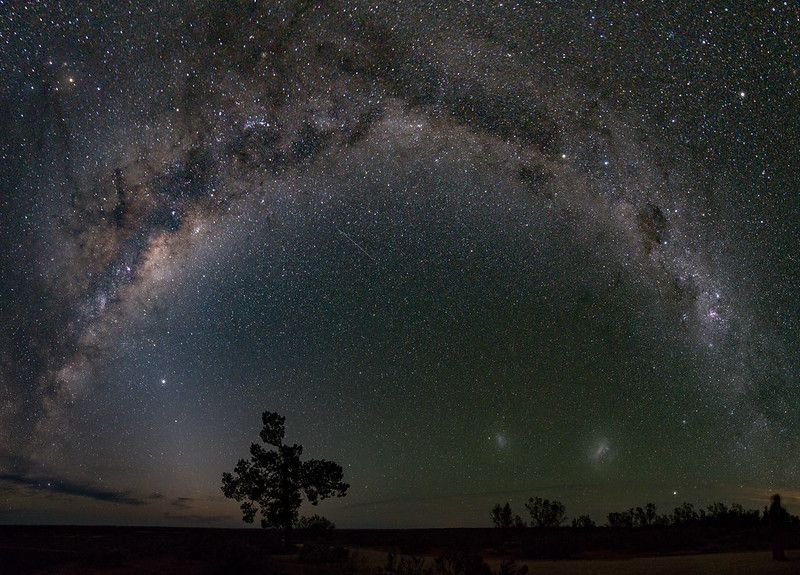Home/Curriculum resources/Astronomical knowledge in art/Activity 1 - Reflecting and responding to artwork
Learning Area:
The Arts
Year levels:
Level 7, Level 8

Activity 1 - Reflecting and responding to artwork
This activity is a part of the Astronomical knowledge in art resource.
The Milky Way galaxy arches over Lake Mungo, Mungo National Park. Barkandji/Paakantyi, Mutthi Mutthi and Ngiyampaa country. Photographer: Peter Lieverdink. Source: Flickr. License: CC BY-NC-SA 2.0
Students will delve into Aboriginal and Torres Strait Islander art, exploring symbols, metamorphosis, and connections to country and identity. They will have the opportunity to analyse art techniques, material choices, and regional variations to gain cultural insights.
Step by step guide
Step 1: Teacher background information
The following videos may support the teacher with background information.
Video “Yirrkala drawings - Larrakitj”: https://www.youtube.com/watch?v=_NgbCuNa8W0
Video “ANKAAA Harvesting Traditional Knowledge – a two-way learning project - Yirrkala”: https://vimeo.com/72787939
The questions below refer to three conceptual categories of symbols, metamorphosis and country and will support students to reflect and respond to the artwork.
Symbols encourage students to think about how we use shapes, pattern and colour to represent a range of ideas, identity and belonging.
Metamorphosis focuses on alternative definitions of time, being and belief. Aboriginal and Torres Strait Islander Peoples’ cosmology has a circular notion of time and being. Culturally, one is part of the landscape or country, and there’s not the same divisions between the human state of being and the animal and plant world. In the cycle of life and death, everything is in a constant state of metamorphosis or change.
Country refers to how we relate to the natural world around us, and how it informs our sense of identity. Aboriginal and Torres Strait Islander Peoples have links to country through language and cultural practices, including dance, songs, stories and totems. Aboriginal Peoples may be connected to country in terms of through descent from a particular ancestor, or cultural authority and identity from both sides of family. There are many Songlines and other cultural aspects that link people to complex social structures, kinship, identity and country.
Step 2: Facilitate a discussion with students
The following questions may be used to facilitate a discussion with students about the three conceptual categories and support students to reflect and respond to the artwork.
How do Aboriginal and Torres Strait Islander Peoples use symbols in artwork?
How does the artwork incorporate Aboriginal and Torres Strait Islander Peoples’ knowledge of astronomy in their work?
How does the artwork tell a story of change or metamorphosis?
In what ways do the materials used provide a connection to country and the environment?
How do the stories in Aboriginal and Torres Strait Islander artwork connect to country and identity?
Consider why Kabbindi might sometimes only use ochre in her artwork, and other times acrylic paint.
Compare and contrast the artworks of the case study artists; one from Western and one from North Eastern Arnhem Land.